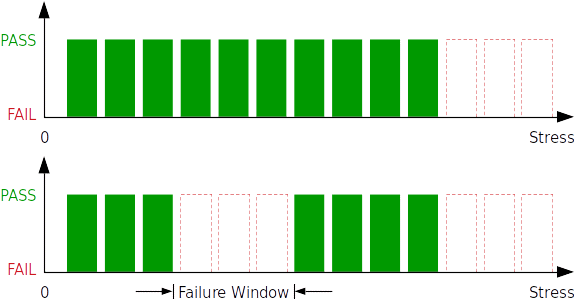ESD Window Effect
Ideally, components or systems are expected to withstand ESD stress up to a certain stress level and to fail (mostly irreversibly) when this stress level is exceeded. This behavior is illustrated in the upper diagram of the picture shown below.

However, sometimes failures occur at a stress level range below the actually expected failure threshold as illustrated in the lower diagram of the picture shown above. This range is called ESD failure window and can easily be missed, if only the specified maximum ESD robustness is validated in the course of the product qualification or if the step size of the stress levels below the maximum ESD robustness is set too large. In order to detect possible ESD window effects, it is therefore recommended to validate stress levels below the specified maximum stress level in reasonable steps.
Failure windows are often caused by unintended discharge paths, that run in parallel to the actual protection element and discharge low ESD currents without being meant to act as ESD protection element. A failure window is established as the stress levels are increased, if a failure occurs along an unintended discharge path before the actual protection element starts to shunt the ESD current.


